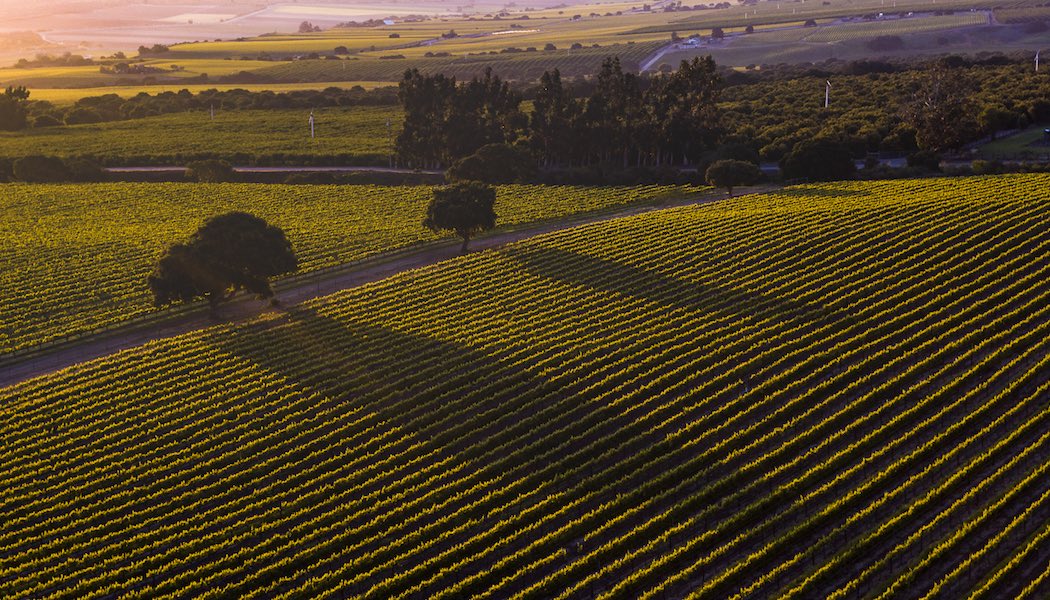
Your Guide to Regional California Pinot Noir
Forbes.com
Tom Hyland
1/2/2019
California Pinot Noir - A Regional Overview
December 17, 2018
Tom Hyland, Contributor
Pinot Noir, wherever it is grown, is a challenging variety. It’s been called “the heartbreak grape,” and the efforts undertaken by winemakers have been called the “quest for the Holy Grail,” at least in viticultural terms.
Producers in California are as passionate about making the perfect Pinot Noir – or at least one as good as possible - and it’s a mission that has been going on for over 50 years. Today, there are wineries in many parts of the state that have taken Pinot Noir by the horns, so to speak, and have come up with some very impressive results.
How have they done it? Is it soil, climate, when the grapes are harvested, the type of barrels used? As with any wine, it’s a combination of all of these, but perhaps no other grape is as dissected as much as Pinot Noir.
I asked Jon Priest, senior winemaker for Etude, located in Carneros (where Napa and Sonoma County meet at the southern border of Napa), about this. What is the single most important thing in the production of Pinot Noir? He was firm in his response. “Absolutely the site. Pinot Noir expresses the peculiarities of a site (terroir) more than most varieties. The potential for quality and individuality only comes from the place in which the vines are grown.”
That being the case, let’s examine some of the major growing zones in California from Pinot Noir, from north to south.
Anderson Valley, Mendocino County
As an early ripening variety, Pinot Noir needs to be grown in a cool climate, and the Anderson Valley of Mendocino, north of Sonoma and Napa, is just that. Katey Larwood, winemaker at Goldeneye, notes that there are two main forces that make Anderson Valley such a special place to grow Pinot Noir. “The first is our proximity to the Pacific Ocean. The second is our extreme diurnal temperature shift, which can be up to 50 degrees between day and night. Because we are a valley, warm air accumulates during the day resulting in moderate-to-high daytime temperatures, but as soon as the sun goes down the temperature drops rapidly … Pinot excels in these conditions.” For Larwood, “the Anderson Valley tends to yield Pinot Noirs with a signature wild, rustic edge.”
Russian River Valley, Sonoma County
One of the most famous territories for California Pinot Noir is the Russian River Valley, named for the east-west river that flows into the Pacific. The names of the local producers read like a who’s who in California Pinot Noir: Rochioli; Gary Farrell; Joseph Swan; Dehlinger; Dutton Estate Winery; Dutton Goldfield; Kistler; Merry Edwards; William Selyem and several others.
As many vineyards are close to the river (and the ocean) fog plays its part here, limiting sunshine hours per day, and ensuring a long growing season that results in expressive aromatics (floral – roses and carnations – as well as intriguing notes of cola) and lively acidity. The best examples combine beautiful structure with subdued spice notes; the best examples also have a sense of minerality.
Sonoma Coast / Fort Ross-Seaview
The Sonoma Coast is a large appellation, encompassing much of Sonoma County, inland as well as the coast. Thus it is difficult to define the style of a Pinot Noir labeled with the Sonoma Coast AVA designation, which is why some producers speak of the “true Sonoma Coast,” this being a small area near the towns of Fort Ross and Cazadero. This small area is now a separate appellation known as Fort Ross-Seaview (unofficially known as the “Extreme Sonoma Coast”); vineyards here are between 900 and 1100 feet above sea level, and are strongly affected by early morning fog as well as coastal breezes. Pinot Noirs from Fort Ross are deeply colored, intensely flavored and structured for several years of aging.
Carneros
Carneros – aka Los Carneros - is one of the most famous Pinot Noir districts in California; it was the first wine region in the state to be defined on climate and not on political boundaries. Situated just north of the San Pablo Bay (an extension of the San Francisco Bay), it is located some 70 miles north of San Francisco, where Napa and Sonoma Counties meet, south of the town of Napa. Vineyards are low lying and morning and afternoon fog play an important part in the climate.
Top Pinot Noir producers here include Etude, Cuvaison and Saintsbury; several Napa wineries not situated in Carneros, such as Robert Mondavi and Clos du Val, have vineyards here or purchase Carneros fruit.
Santa Lucia Highlands, Monterey County
The Santa Lucia Highlands has become a vital area for California Pinot Noir, thanks to its distinctive features. Stacy Vogel, winemaker for Miner Family Vineyards in Napa Valley, who produces several examples of Pinot Noir from the Santa Lucia Highlands, notes that a main thoroughfare here known as River Road divides the flat lands where lettuce and other vegetables are grown in hot conditions (this is Steinbeck country) from the slopes of the Santa Lucia Highlands where fog envelops the vineyards; temperatures here are often in the 60s.
According to Vogel, “The wines from the SLH all have both a delicacy of fruit characters, along with a earthiness that is usually only found in Pinot Noir with denser, plummy fruit characters.” These wines have great complexity and truly stand out in comparative tastings of the state’s Pinot Noirs, especially for their spicy, earthy characteristics. Area producers include Belle Glos, McIntyre and Siduri, while producers from outside the region, such as Miner and Mark West produce Pinot Noirs from this area’s plantings.
Sta. Rita Hills, Santa Barbara County
This growing district has become arguably the finest for Pinot Noir in the state; I have come to this opinion based on comparative tastings over the past few years. This is a small zone, with most vineyards situated only 10 miles from the Pacific Ocean.
Victor Gallegos, General Manager and Director of Winemaking for Sea Smoke, a celebrated area producer, comments on this territory. “Sta. Rita Hills is the southernmost Region 1 microclimate (Region 1 equates to the coolest temperatures for a wine region) to be found in the Northern Hemisphere. The solar intensity found at our southern latitude and the daily fog (Sea Smoke) influence here create wines that are lush, but with great freshness and acidity.”
I love the varietal purity as well as the complexity and structure of the Pinot Noirs from the Sta. Rita Hills; the finest examples offer appealing drinkability upon release, yet display great complexity after several years in the bottle. Great area producers include Fiddlehead Cellars (their Fiddlestix Vineyard is one of the most renowned plots here), Babcock and Sanford. This last producer releases as many as four offerings of Sta. Rita Hills Pinot Noir, with the most famous being from the Sanford & Benedict Vineyard, planted in 1971; these are mouth-filling wines of impressive complexity.


